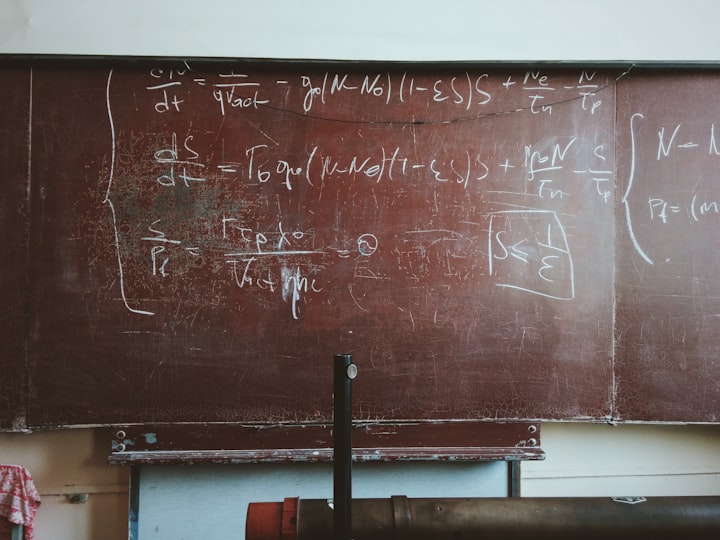Randall Sundrum Model Analysis
An academic look into our universe

Raman Sundrum, an Indian-American theoretical particle physicist, started his formal education at the University of Sydney in Australia before moving on to receive his Ph.D. from Yale, where he graduated in 1990, nine years before the creation of the Randall Sundrum model. Lisa Randall was born in Queens, New York and studied at Harvard University before going on to be the first tenured woman in the Princeton physics department. Today she works at Harvard.
In the summer of 1998, Lisa Randall began her study of extra dimensions. It was Lisa Randall who reached out to Raman Sundrum and asked him if he would look into extra dimensions and branes with her. "Raman had already thought about branes and extra dimensions, and he was an obvious person to join forces with,” Lisa Randall explained. Sundrum wasn’t as sure about following physics, though. He was on the outs with science for financial reasons but decided to make this his last exploration in physics, a decision he was glad he made. After they released their papers, “The Randall Sundrum Model,” Sundrum was offered no less than seven jobs at different highly acclaimed universities and is still working in physics today.
The Randall Sundrum Model was created in 1999. The two had previously studied technicolor models together and already highly respected one another. The Randall Sundrum Model’s creation addressed the Higgs Hierarchy Problem that existed in particle physics between the Planck Scale and the Weak Scale. The Randall Sundrum Model is the concept that there is more than one dimension in the universe, therefore building off of Einstein’s equations of five spacetime dimensions. According to the Randall Sundrum model, the separate dimensions share gravity, and that is why gravity has a weaker force despite being such a powerful thing. Other than that, the five dimensions are separate. The model proposes that our universe is located on a higher dimensional universe that can be described by warped geometry.
Randall and Sundrum didn’t set out to explore the Hierarchy Problem but soon found themselves researching gravity, branes, and other dimensions, all tied to that problem. The Hierarchy Problem is that gravity is significantly weaker compared to other forces that were believed to also be around during the Big Bang. Theoretically, the force of gravity should be significantly stronger. Randall and Sundrum thus proposed that gravity must lay in and come from a dimension separate from ours, and that it is separated from us through branes. “There are regions beyond the horizon that look really entirely different. And we haven't fully explored them yet,” Randall said.
But according to the Smithonian, the possibility of these other dimensions being real are extremely small. According to the String Theory, created by John Schwarz and Andre Neveu, also known as the “Theory of Everything,” there are ten dimensions. According to recent studies, the reason why we haven’t experienced or detected them to this point is because they are small and fleeting. If they weren’t so, there would be an extremely high chance of two protons smashing together and creating a tiny black hole that would exist for only a few seconds. This creation of the tiny black hole would open a bubble of interdimensional space where the laws of physics are totally different from ours and create a vacuum decay. This bubble would then grow and effectively destroy our dimension from existing. Physicist Katie Mack said, “If you’re standing nearby when the bubble starts to expand, you don’t see it coming. If it’s coming at you from below, your feet stop existing before your mind realizes.” The Smithsonian article goes on to say that Randall and Sundrum were wrong in saying that gravity was leaking into our dimension from another, as our continued existence would be highly unlikely if the dimensions were large enough to contain gravity that could leak into our world.
Physicist Kris Pardo from Princeton has run numerous tests and studies regarding the Hierarchy Problem and the concept of gravity coming from another dimension. Pardo said, “General relativity says gravity should be working in three dimensions, and [the test results] show that that’s what we see.” Pardo said that gravity wouldn’t lose energy getting from one dimension to another, regardless of size and world-ending bubbles, so the theory it’s leaking in is improbable.
Others argue, though, that the universe will be destroyed eventually, so who's to say it won’t be due to a bubble black hole from another dimension? In fact, the cosmic death bubble, as it’s been coined, is growing in popularity and in the idea that that is how our world will end. Theoretical physicist Joseph Lykken from Fermi National Laboratory in Batavia, Illinois said, “When you do this calculation using the standard physics we know about, it turns out we’re right on the edge between a stable universe and an unstable universe. We’re sort of right on the edge where the universe can last for a long time but eventually should go boom.” Others still say that the cosmic death bubble won’t get here in time to be the reason for our universe to be destroyed. They’re finding if the death bubble does occur, it would take between ten quinquadragintillion years and 10 octodecillion years to get here. Researcher and scientist Anders Andreassen said, “Our sun will burn up and many things will happen in our solar system before this is very likely to happen.”
What this means is that if Randall and Sundrum are right about gravity coming from a different dimension, we are also very likely to have a death bubble coming for us long after we’re dead. Despite extensive research, physicists today are still unsure how accurate Lisa Randall and Raman Sundrum were about there being a dimension giving us gravity; although it’s starting to look more likely that that is not the case. It looks most likely, given that there are multiple dimensions, that these alternate dimensions are extremely small and couldn’t contain gravity.
Bibliography
Alencar, G., et al. “Antisymmetric Tensor Fields in Randall–Sundrum Thick Branes.” Physics Letters B, vol. 693, no. 4, 2010, pp. 503–508., doi:10.1016/j.physletb.2010.09.005.
Cæsar Pachecø, et al. “Will The Higgs Boson Destroy The Universe In A Cosmic Death Bubble? .” World Science Festival, 26 June 2017, www.worldsciencefestival.com/2014/09/will-higgs-boson-destroy-universe-cosmic-death-bubble/.
Daley, Jason. “If a Cosmic Bubble Destroys the Universe, Scientists Now Know When It'll Happen.” Smithsonian.com, Smithsonian Institution, 9 Apr. 2018, www.smithsonianmag.com/smart-news/we-now-know-when-cosmic-death-bubble-may-destroy-universe-180968687/.
Daley, Jason. “We Haven't Been Zapped Out Of Existence Yet, So Other Dimensions Are Probably Super Tiny.” Smithsonian.com, Smithsonian Institution, 8 Oct. 2018, www.smithsonianmag.com/smart-news/our-continued-existence-means-other-dimensions-are-probably-super-tiny-180970487/.
Hartsfield , Tom. “Heat Death: The Ultimate Fate of Our Universe.” RealClearScience, 4 Dec. 2013, www.realclearscience.com/blog/2013/12/heat_death_the_ultimate_fate_of_our_universe.html.
Hisaki Hatanaka, Makoto Sakamoto, Motoi Tachibana, Kazunori Takenaga, Many-Brane Extension of the Randall-Sundrum Solution, Progress of Theoretical Physics, Volume 102, Issue 6, December 1999, Pages 1213–1218, https://doi.org/10.1143/PTP.102.1213
Holloway, Marguerite. “The Beauty of Branes.” Scientific American, Scientific American, 1 Oct. 2005, www.scientificamerican.com/article/the-beauty-of-branes/.
Kawasaki, Masahiro. “Condition for Primordial Black Hole Formation in Randall–Sundrum Cosmology.” Physics Letters B, vol. 591, no. 3-4, 2004, pp. 203–207., doi:10.1016/j.physletb.2004.04.038.
Kisselev, A.V. “Generalization of the Randall–Sundrum Solution.” Nuclear Physics B, vol. 909, 2016, pp. 218–229., doi:10.1016/j.nuclphysb.2016.05.013.
Raman Sundrum, (Stanford Univ) 03, www.on.kitp.ucsb.edu/online/susy_c99/sundrum/oh/03.html.
Vance, Erik. “Meet the Higgs Bubble That Will Destroy the Universe. Maybe.” LiveScience, Purch, 3 Apr. 2018, www.livescience.com/62207-higgs-field-instanton-destroy-universe.html.
Watkins, Thayer. The Timeline of the Development of String Theory and Its Derivatives, San José State University, www.sjsu.edu/faculty/watkins/stringtime.htm#:~:text=John%20Schwarz%20and%20Andre%20Neveu,a%20world%20of%2026%20dimensions.
Williams, Matt. “A Universe of 10 Dimensions.” Phys.org, Phys.org, 11 Dec. 2014, phys.org/news/2014-12-universe-dimensions.html.
Wood, Charlie. “What Is String Theory?” Space.com, Space, 11 July 2019, www.space.com/17594-string-theory.html.






Comments
There are no comments for this story
Be the first to respond and start the conversation.